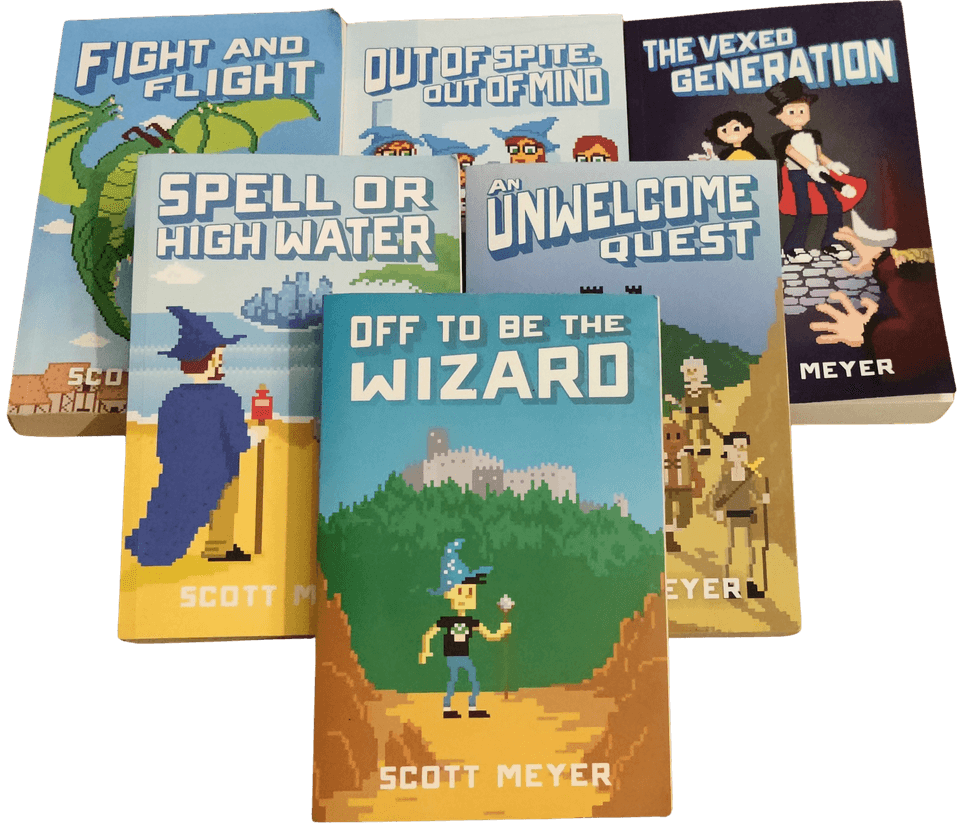I recently finished reading a fun little fantasy/sci-fi series called "Magic 2.0" by Scott Meyer. This series is probably best known for its first book, "Off to Be the Wizard". The premise of that book goes as follows: Martin Banks, a 20-something computer nerd, finds himself poking around obscure corners of the internet one evening, when he discovers a mysterious file that contains information about everyone and everything in the world. He soon realizes that editing the data in this file allows him to modify reality itself, as reality appears to be nothing more than a computer program that uses the file as a database. Editing the file even enables teleportation and time travel. Martin proceeds to develop a simple mobile app for manipulating the file to his advantage, eventually leading to him getting into serious trouble, which he escapes by fleeing to medieval England. There, he plans to pose as a wizard by using his newfound reality-altering powers to perform "magic".
⚠️ SPOILERS AHEAD: Important plot points from the first half of the first book and details about the magic system. If I have already convinced you to dive into the series, you might want to stop reading here.
At first, it is by the means of his mobile app that Martin plans to convince medieval folks that he can perform magic. To that end, he had previously tweaked the file entry that describes his mobile phone in a way that keeps it permanently connected to a cell antenna in the 2010s, even as it now lives in the Dark Ages. Another tweak prevents the phone from ever running out of battery.
However, he soon learns that he is not the only person to have found the file, nor is he the only one to have had the idea to flee from self-induced trouble by becoming a medieval wizard. In a medieval English town called Leadchurch in the year 1150, he meets Philip, a fellow "wizard" who himself found the file in the early 1980s while snooping around some corporate mainframe using a telephone modem on his Commodore 64. Phillip reveals to Martin that there are about 20 other "wizards" currently living in medieval Europe (the book offers an explanation as to how these people all conveniently decided to flee to the same time and geographical area). He also explains to him that the wizards have come up with an interface to alter the file in a more sophisticated and capable way than Martin's mobile app. Using this interface is also more akin to performing "real" acts of magic.
The interface in question is, in my opinion, the coolest part of the series' world-building. It involves a program, developed by the wizards, called "The shell". The shell constantly monitors the wizards' entries in the file, and detects when any of them utters a "spell". It then manipulates the file to produce the expected effect. The spells are phrases in approximate Esperanto, which was chosen over Latin for the sake of secrecy, as there are people in the Middle Ages who actually speak Latin. Moreover, in order to cast spells successfully, a wizard must wear a wizard robe and pointy hat with the appropriate specifications, and hold either a staff or a wand. This is the magic system used by the time travelers who pose as wizards in medieval Europe, but we learn that there are other "colonies" of time travelers who chose other geographical areas and time periods to live in and built their own interface to the file.
This is all I am going to say about the story itself. The first book follows common tropes of the fantasy genre, which does not make it any less enjoyable. The following books in the series expand on the universe and the possibilities of the file, and lean more into the time travel aspect of it all.
These books are not meant to be taken seriously, as they are written in a very tongue-in-cheek fashion. They do not pretend to be a literary masterpiece. They are to be read with an open heart and not to be overthought, as they contain a few plot holes that are forgiven by the creativity and lighthearted nature of the work. They are for fun.
As is often the case with series, the books are not all equal. Some say it goes downhill after the first book. As for me, my preferred book was the third one. The fourth book is the only one that struck me as significantly weaker than the others. It is unclear at this time if the series is finished or if the author will return to it in the future.
The series hit the right Venn diagram for me, as I am a computer nerd who enjoys stories about magic and medieval fantasy — and I also once had an interest in learning Esperanto! If you share some of these characteristics, I recommend getting your hands on the first book. It exists in paperback, e-book and audio book formats.

